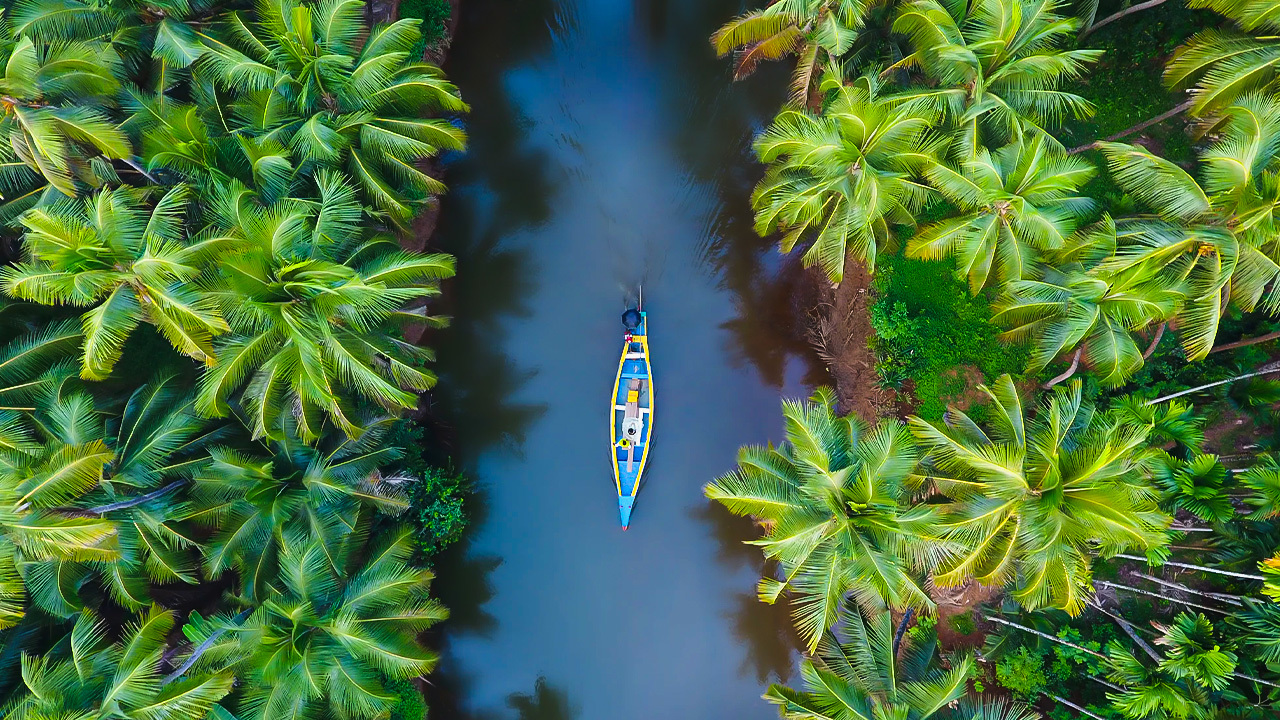
A paradise could be described as a tropical place where you feel as though everything is perfect & wonderful and a place fit for the Gods to dwell. It is also a place of contentment, a garden with plenty of fruits & all kinds of fulfilment giving great happiness. It is no wonder that Kerala is called God’s own country! This unique strip of land in the southwest part of India has it all; a long shoreline with tranquil beaches, emerald backwaters, lush hill stations, serene, verdant landscapes, exotic wildlife, and a culture that is so uniquely wonderful.
This land has attracted people for centuries with its blessed natural wonders and a fine way of life in tune with nature that’s been handed down over generations.. From the ancient healthcare system of Ayurveda & spirituality to evolved art forms, God’s Own Country has many enriching experiences for any tourist. So let us look at this land through the lens of what experiences you can indulge in when you get there.
Table of Contents
1. Cruise the Backwaters on a Houseboat
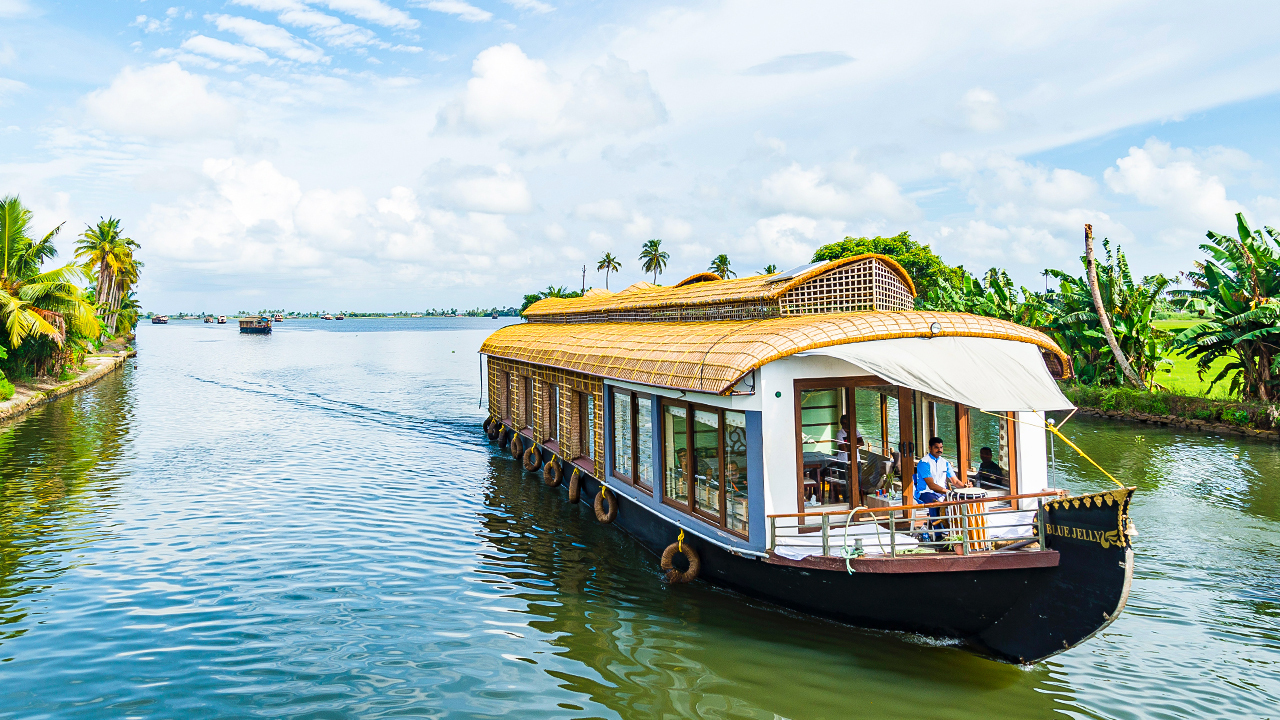
Would you believe it if we told you that you could live in a charming houseboat built with coir & wood loaded with refined amenities like dining halls, plunge pool, spa baths and living rooms? Yes, you can do just that and so much more here on these old-world houseboats overlooking spectacular views of Kerala’s backwaters that create a welcoming retreat as you lounge in its viewing terraces with cosy beddings.
They serve delicious authentic Kerala meals on board with traditional delicacies cooked by in-house chefs. Or they stop at a good restaurant onshore with a trendy bar shack that serves local cuisines and exotic drinks. Some houseboats even offer designer furnishing and contemporary amenities like coffeemakers and blazing-fast connectivity.
?Where to go for a Houseboat experience: Alleppey, Kumarakom, Kollam, Kozhikode
2. Take Spice Plantation Tour
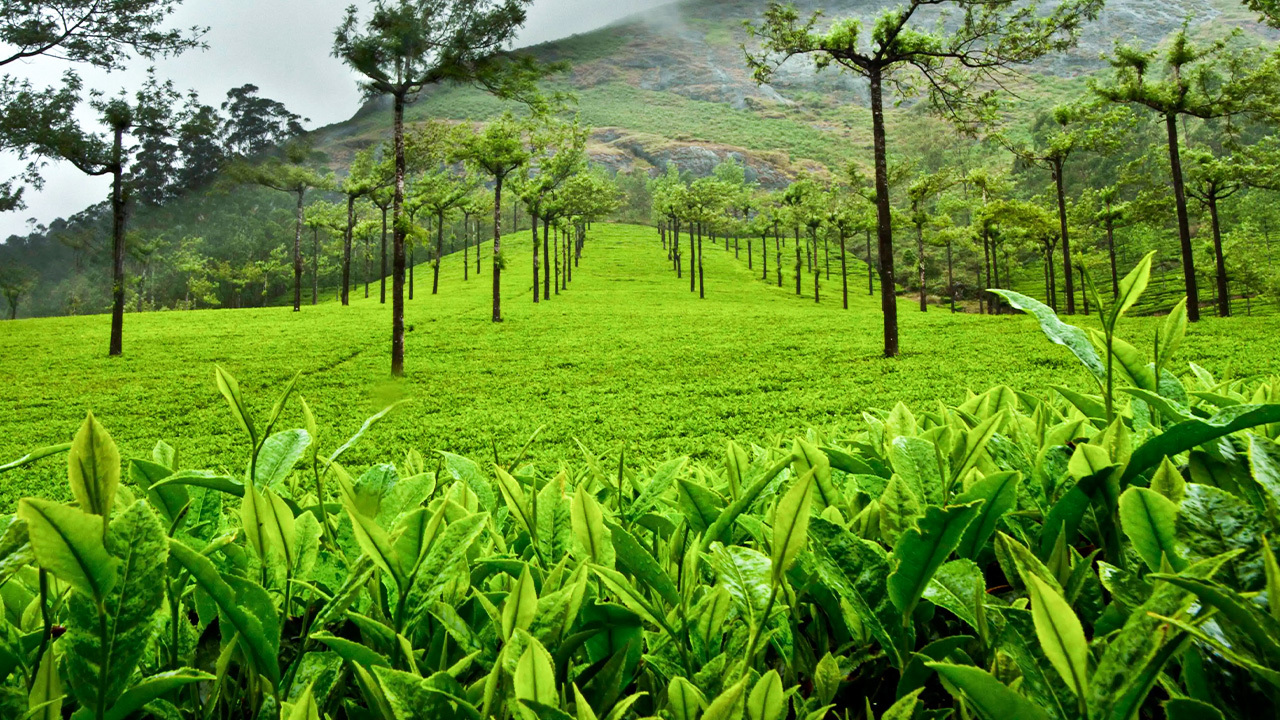
Historical records cite Kerala’s spice trade with Babylon and Egypt, dating back 2000 years and Roman ships coming to Kerala shores laden with gold to be exchanged for pepper. But the most defining moment in the history of the Spice Route was when the Portuguese explorer Vasco da Gama’s journeyed to Malabar. It laid the foundation for colonization and caused the rise and fall of mighty empires. Later it was traversed heavily by explorers & traders of yore, defined the Spice Route as history’s most significant & enigmatic trade route. Old records reveal that around 31 countries in Europe, Asia and the Far East had a spice trade with ancient Kerala. This included Denmark, Netherlands, Portugal, Spain, Afghanistan, Jordan, Burma, China, Egypt, Lebanon, Malaysia, Mozambique, and Oman.
Therefore it is worth exploring as a visitor what this fuss is all about over some spices and understanding their value in the history of this land. Some of the spices that Kerala is famous for and which you can see in the spice plantations of Kerala are pepper, cardamom, cinnamon, ginger, vanilla, and nutmeg. These spice plantations in Kerala are captivating places to wander around since different spices are cultivated in different sections of each plantation. A trip takes us to a working spice farm where we see and learn about these aromatic spices growing.
? Spice plantation tours in Kerala can be undertaken in Munnar, Cochin, Kumarakom, Wayanad, and Thekaddy.
3. Watch A Theyyam Performance
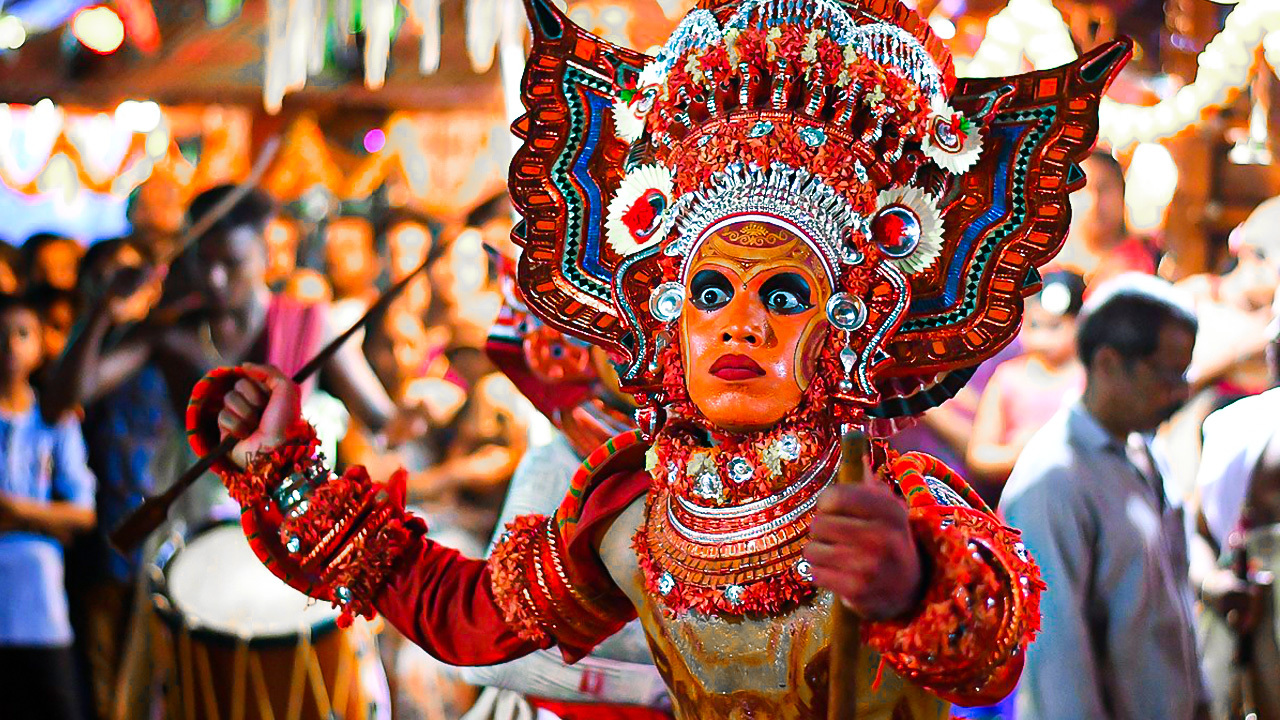
A Theyyam performance is a perfect blend of dance, music and mime. This storytelling folk art form is usually performed only by men, who play out the stories of divine, mythological, or heroic characters. The men even enact the female roles by wearing exotic make-up and colourful costumes. Theyyam is celebrated yearly at the temples in Kerala between December and April, especially in the Kannur district in North Kerala, with much pomp and rigour.
These performances are not conducted on a stage. This holy invocation is usually performed before the village shrine or in large joint-family houses as ancestor worship with elaborate rites & rituals. It is an open theatre with Chenda, tuti, kuzhal and veekni, the folk musical instruments of Kerala, are played in the background in a specific rhythm.
? Where to go for a Theyyam experience: Kasargod
4. Catch a Kathakali Performance

Kathakali falls in the category of disciplined classical Indian dances and is counted among six of India’s most important classical dance forms. Katha means story, and Kali means play. This dance form uses exquisite expressions and hand & feet movements with a unique costume which is much different from other Indian Classical dance forms. Kathakali is a religious dance that draws inspiration from the stories of Ramayana and Shaiva traditions. It is traditionally performed by boys and men, even for female roles. Faces made to look like painted masks with enormous headdresses.
This dance form was performed for royalty but later was introduced to the public to unlock the beauty of the Sanskrit poems and make them accessible to a broader audience. Kathakali is an extraordinary combination of the arts, where each element merges to create a complete theatrical experience to showcase human behaviour and bring out our eternal desire to come closer to spirituality. This enthralling dance form, with its magnificent costumes, make-up, complex drumming, sensitive singing and powerful acting, has survived through generations and will continue to inspire, educate and entice people from all around the world into the splendour of Kathakali.
? Kochi is where you have the best chance to see a live Kathakali in Kerala, either in temple festivals held in winter or at the shorter tourist-oriented shows that take place year-round on all days at – Folklore Museum, Dr Devan’s Kathakali, Kairali Kathakali, Kerala Kathakali Centre, Rhythms Theatre.
? In Trivandrum at Margi School.
?In Thekkady at Kadathanadan Kalari Centre & Navarasa Kathakali.
5. Catch mesmerizing sunsets on the beautiful beaches of Kerala
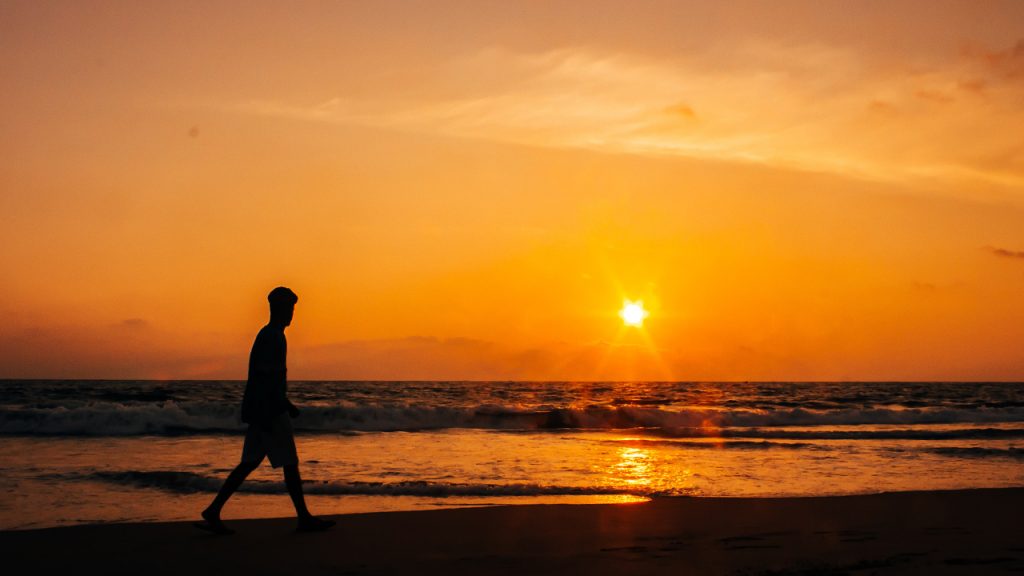
Guarded by the Western Ghats in the state’s interiors, Kerala’s 550 km long coastline overlooking the splendid Arabian Sea, its beaches need no introduction. Being the coastal side of the country, Kerala is an abode to some captivating beaches for you to admire the sun-kissed horizons & for taking in the beauty of the lovely warm waters breaking waves on the soft golden shores. On these beaches, you can completely surrender your senses and stay immersed in the natural beauty around you to relax and get inspired.
? Amongst the innumerable beaches, here are a few that you can explore –
?️ Kovalam Beach, near Thiruvananthapuram
Kovalam Beach is the most popular and most developed beach in Kerala it is located close to the capital, Trivandrum and is also a popular surfing destination in India.
?️ Kappad Beach, near Kannur
The Kappad Beach in Kerala is where Vasco Da Gama touched the Indian shores and is now one of the most scenic beaches India has to offer with a Blue Flag certification.
?️ Allapuzha beach, Alappuzha (formerly Alleppey)
With the beautiful backwaters forming an elaborate network of heavenly water bodies, the Allapuzha beach is well-known and has earned the title ‘Venice of the East.
?️ Varkala beach, near Thiruvananthapuram
The gorgeous Varkala beach recaptures the hippie vibe of Goa. The Southern part of the beach leads to a sacred Hindu temple, whereas the Northern area is the main tourist spot and is famous for being located at the bottom of a cliff bordered by beach shacks and shops.
?️ Bekal Beach, near Kannur
Enjoy the azure blue waters at Bekal beach with a brilliant view of the majestic Bekal fort and a quiet, relaxed atmosphere. This beach is around a 90-minute drive from Mangalore airport in Karnataka. Luxury hotels are moving into the area, making it a place for a pampered getaway.
?️ Cherai Beach, Kochi
Witness the gorgeous sunset that lights up the golden sands of the shore of Cherai Beach. It is in an isolated location on Vypeen Island and can be reached from Kochi by ferry and then by bus or an auto rickshaw ride through the villages and paddy fields. One of the remarkable sights here is the beach and lagoon next to each other.
?️ Meenkunnu Beach, near Kannur
A little away from the small town of Kannur is the less explored beach famous for its golden sand & surf; Meenkunnu Beach is a delight to solace seekers.
?️ Marari Beach, Alappuzha (formerly Alleppey)
The Marari Beach is not far from Alappuzha (formerly Alleppey), making it convenient for those who’d like to spend time at the beach and stay in a houseboat on the backwaters.
6. Relax & heal with an Ayurvedic Treatment or a quick Massage
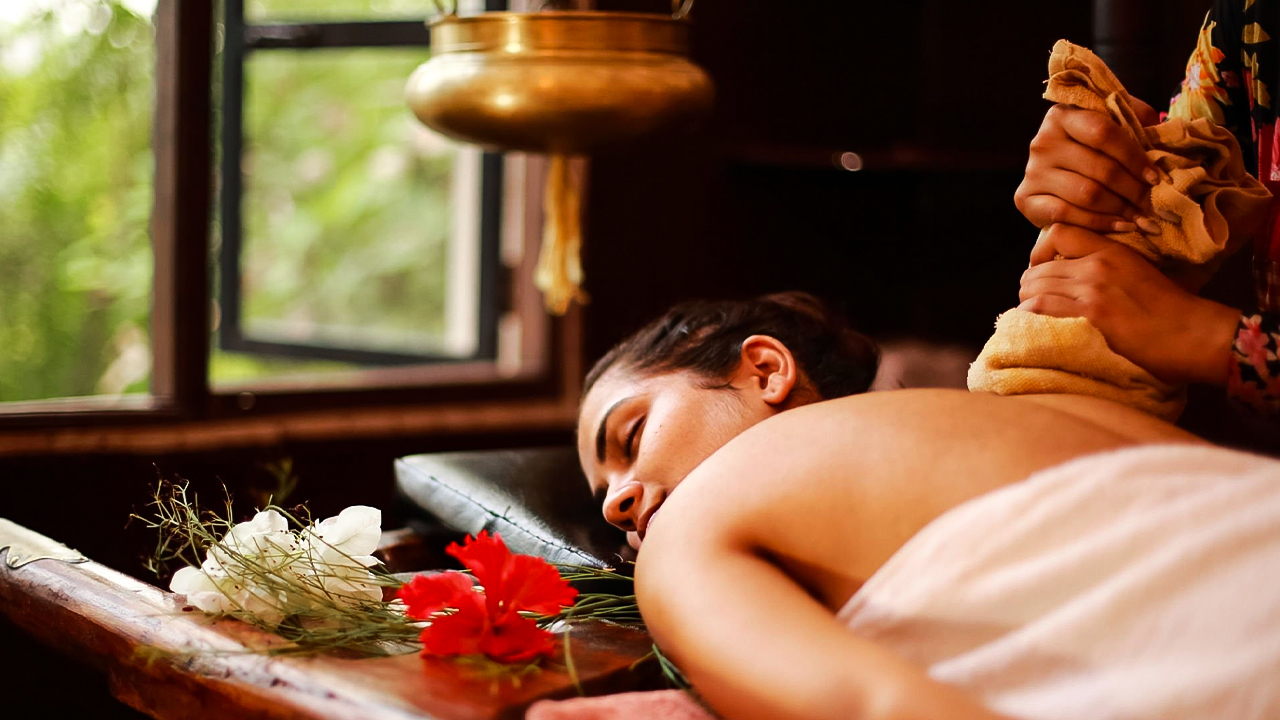
Ayurveda originated in India more than 5,000 years ago as a natural system of medicine. Ayurveda translates to knowledge of life and is derived from the Sanskrit words Ayur (life) and Veda (science or knowledge). This healing science encourages particular lifestyle interventions and natural therapies to regain the balance between the mind, body, spirit, and the environment.
Ayurvedic treatments begin with an internal purification process, followed by a special diet, massage therapy, herbal remedies, yoga, and meditation.
Kerala is also known as the destination for tourists wanting to explore these traditional treatments, as this region is naturally blessed with medicinal plants & trees with ample knowledge on this subject. This is probably the only state in India where Ayurveda is used as mainstream medicine and has expert practitioners. The all-inclusive Ayurveda Treatment of Kerala is best for everyone, and others vary from beauty care to stress management, slimming and anti-ageing programs.
? The following places in Kerala offer good Ayurvedic treatments –
??♂️Taj Malabar Jiva Spa
??♂️Kairali Ayurvedic Health Resort
??♂️ Beach and Lake Ayurvedic Resort
??♂️ Kalari Kovilakom
??♂️ Somatheeram Ayurvedic Health Resort
??♂️ Ayurveda Yoga Villa
??♂️ Sarovaram Ayurvedic Resort
??♂️ Ideal Ayurvedic Resort
??♂️ Shin Shiva Ayurvedic Resort
??♂️ Maya Spa at The Zuri Kumarakom Lake Resort
7. Get rejuvenated by the Athirapally Falls
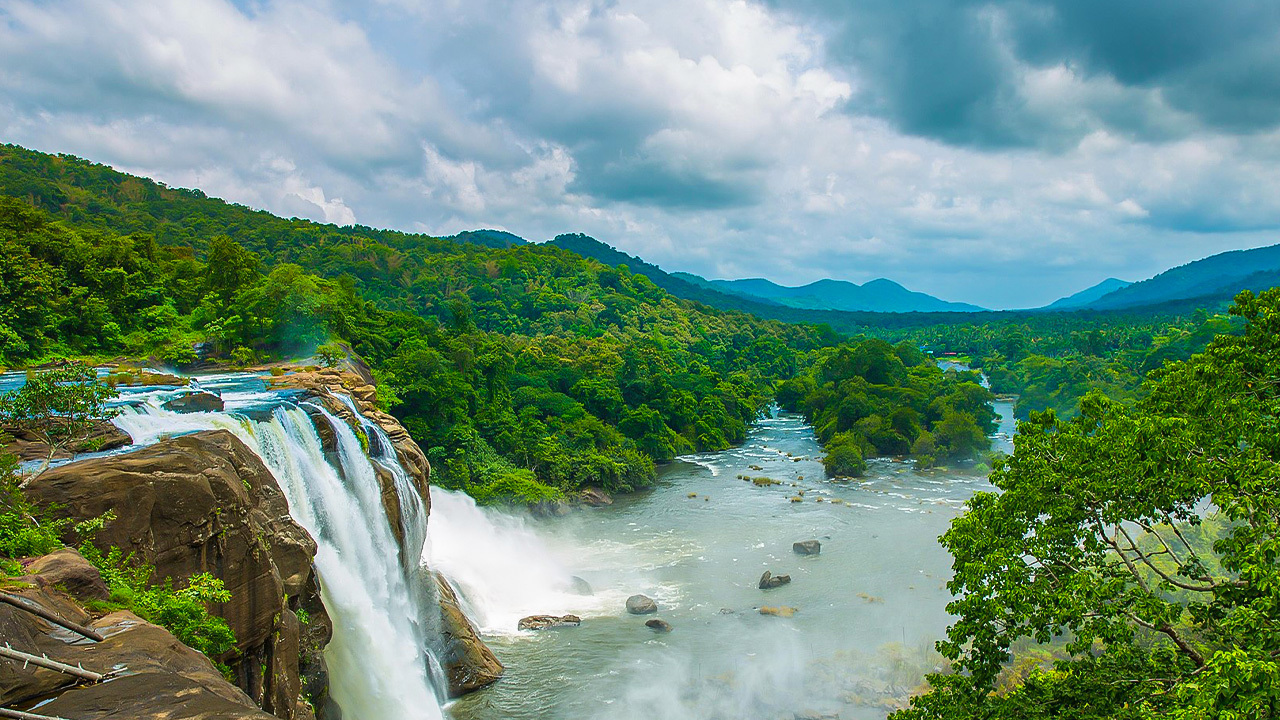
Often termed the ‘Niagra of India’, Athirappily Falls make its way from the Anamudi mountains of the Western Ghats in a marvellous cascade of frothy waters. The grand Athirappilly Falls is the largest waterfall in Kerala, located 1000 ft above sea level, with a width of 100m (330 feet) & falling from a height of 25m (82 feet) and a four-level drop.
It lies on the border of Ernakulum district & Thrissur district and is a significant tourist attraction in Kerala. The view of the falls at its peak is sure to mesmerize you. Just make sure you are in the right season to enjoy the most. It is also possible that the authorities could close it when there is heavy rainfall in the area without much notice. To reach the top of the falls, you need to climb down around 400m from the main gate and stand to view the majestic falls. Expect to get drenched as the water falling on rocks sprays you wet, and the strong wind makes you want to seek support. The view and feeling once you come here are breathtaking.
You can club the visit to Vazhachal waterfalls close by, and tickets can be purchased for both together. This one does not need much climbing, and one can walk through the nicely fenced footpath to enjoy the view making it a bit easy for elders.
During the Monsoons season, the magnificently interlaced lush green forests covering patches of Sholayar Dam and the sizzling silver cascade make Athirappilly a promising land. Similarly, Swollen Chalakkudy River and Charpa falls can also be enjoyed along with Athirappilly falls during Monsoon.
8. Spot Endangered Wildlife & enjoy the Biodiversity of Eravikulam National Park
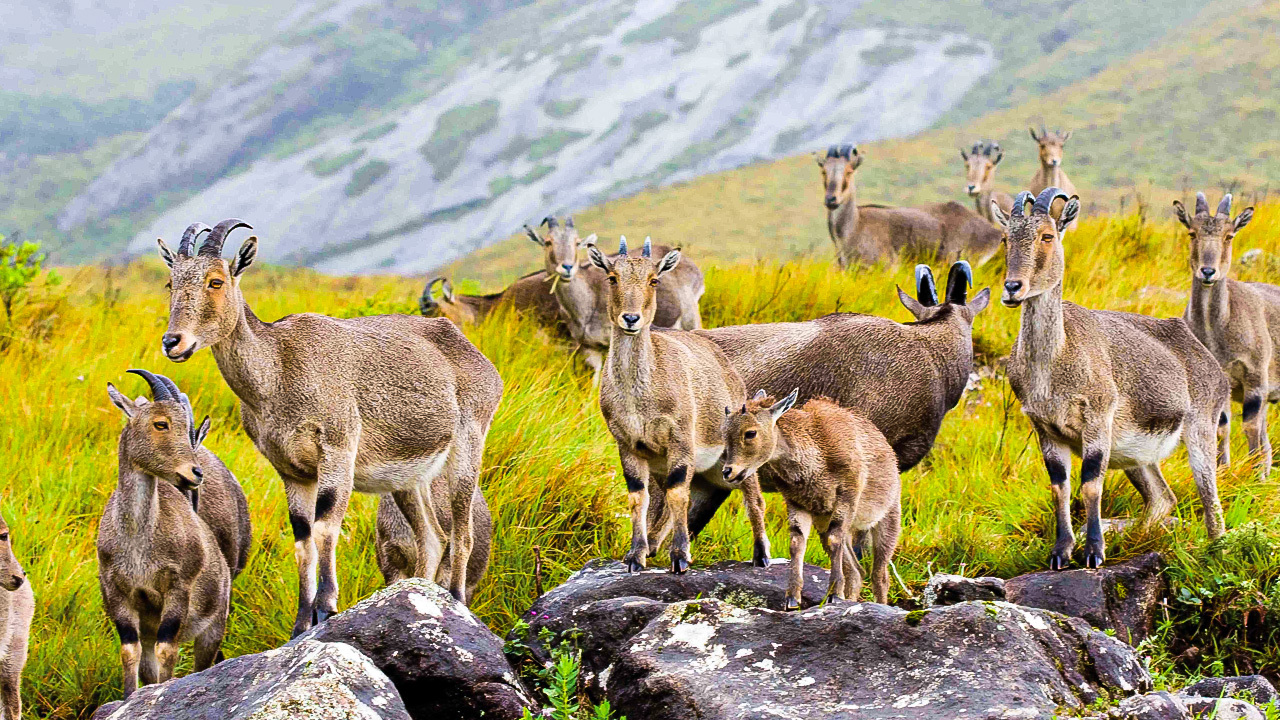
Imagine a national park with a backdrop of tea plantations, which is Eravikulam National Park for you and so much more. This is a national park in the high ranges of Kerala, offering glorious views of hills laden with lush tea plantations in the Kannan Devan Hills of the southern Western Ghats. This wildlife park, with an area of 97 sq. km., is close to Munnar in the Devikulam Taluk of the Idukki district in Kerala. From Munnar, you need to take the road going to Rajamala to reach this national park, where visitors are allowed since the rest of it is a protected area and inaccessible to tourists. Eravikulam is famous for the natural habitat of the endangered mountain goat, Nilgiri Tahr, and is built to conserve them.
Another wonder you can witness here every twelve years is the mass flowering of the blue Neelakurinji flowers making the area seem carpeted in blue. You can opt for a soft three-hour trekking tour, Kurinji Trail, that lets you map your way through the tracks of the Nilgiri Tahr and the grasslands draped in Neelakurinji. This is scheduled for mornings and evenings.
In the vicinity is the Lakkom Waterfalls that tumble down the hills and originate from the heart of the Eravikulam National Park, offering spectacular views. The waterfall on the roadside route from Munnar to Marayoor is easily accessible to tourists who can avail of refreshments from the eco shop cafeteria.
9. Watch the Martial Art Form of Kalaripayattu
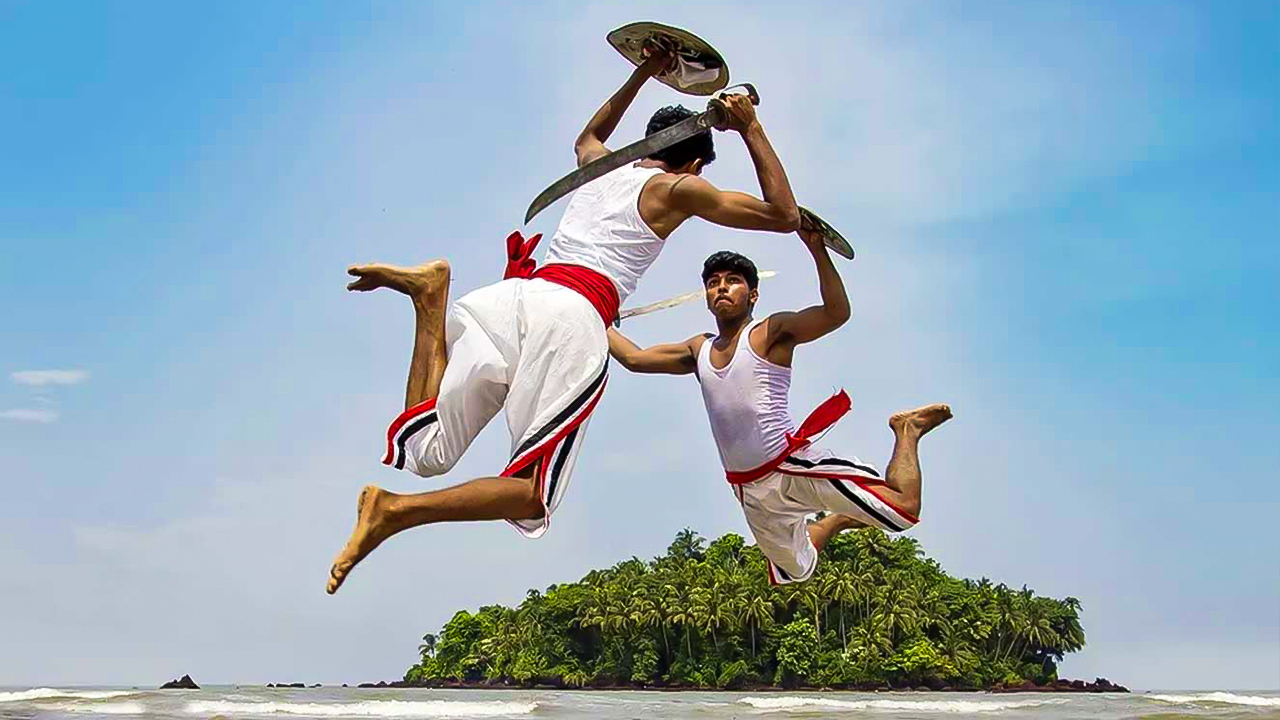
Kalarippayattu is one of the oldest martial arts forms in India that originated about 2000 years ago in Kerala. The name Kalaripayattu is formed from two words, ‘ Payattu‘ meaning practice and ‘Kalari‘ meaning training school. It is primarily concerned with self-defence. Many historians consider Kalaripayattu martial arts to be the origin of all martial arts that incorporates yogic strength &, posture refinement, and Ayurvedic medical practices. The practice of Kalaripayattu training helps one become more adept at unarmed self-defence, improves mental toughness, tones up the muscles, conditions the body, increases stamina, strengthens the immune system, and bestows enhanced powers of self-control and concentration.
?Places where you can watch Kalaripayattu in action while in Kerala are –
⚔️ C.V.N. Kalari
C.V.N. Kalari conducts regular training sessions and short-term classes for tourists.
Address: S Street Rd, Fort, East Fort, Chalai, Trivandrum, Kerala 695023
⚔️ Greenix Village
You will be able to find an L-shaped gallery area for Kalaripayattu where you can watch the art form. Also, you will find the traditionally used Kalaripayattu weapons on one side of the gallery.
Address: C.C. 2/481, Calvathy Rd, Calvathy, Aspinwall Junction, Kunnumupuram, Kochi, Kerala 682001
⚔️ Kadathanadan Kalari
The Kadathanadan Kalari centre is located in Thekkady and conducts regular performances for visitors.
Address: Tiger Reserve, Thekkady, Kumily, Tamil Nadu 685509
⚔️ ENS Kalari
The speciality of ENS Kalari is its trainers. Yes, the trainers have a vast knowledge of this art form, Ayurveda, mathematics and many more.
Address: Nettoor PWD Road, Ernakulam, Kerala 68204
⚔️ Kerala Kathakali Center
You can watch Kalaripayattu shows here daily, and to avoid the crowd and the queues, make sure you book the tickets beforehand.
Address: KB Jacob Rd, Fort Nagar, Kochi, Kerala 682001
⚔️ The Kalariyil Dharmikam
The famous Guru Balachandran Nair is the one who teaches the Kalaripayattu art form here.
Address: Parasuvaikkal, Trivandrum, Kerala 695508
⚔️ Mudra Cultural Centre
Mudra Cultural Centre conducts Kalarippayattu shows regularly, where the performers are allowed to showcase their talent to a large audience.
Address: Kumily Thekkady Rd, Thekkady, Kumily, Tamil Nadu 685509
⚔️ Kalari Kshethra
Kalari Kshethra conducts daily evening Kalarippayattu shows where one can witness the beauty of this spectacular art form. You will be able to watch four types of Kalaripayattu which are known as Mey Payattu, Vadi Payattu, Ayudha Payattu and Adi Thada.
Address: Kochi Road, Chithirapuram South, Munnar, Kerala 685655
10. Watch a Snake Boat Race

The origins of the Snake Boat Races can be traced back 400 years from its history when the kings of Alleppey (now Alappuzha) and the surrounding areas fought each other in boats along the canals. After suffering heavy losses in such a battle, one such king got his boat architects to build him a better vessel, and the snake boat was born, giving him much success. This type of boat making is a fine craft with subtleties of the design that are very hard to copy without the proper know-how.
In today’s times, boat races are held with boats that garner much excitement among locals and visitors alike during various festivals, especially around the biggest festival in Kerala, Onam. Snake boat races are held during the monsoon season, June to September, and the exact dates depend on the phase of the moon each year.
? The few main snake boat races are listed below, and many smaller ones are held each year in and around Alleppey –
?? Nehru Trophy
The most prestigious race of the season, usually held on the second Saturday in August every year, is the Nehru Trophy race. Many people gather on the banks of Punnamada Lake to witness the spectacle of beautiful 100 ft long snake boats racing to the tune of old boat songs.
Location: Punnamada, Alappuzha district
Nearest railway station: Alappuzha (7 km)
Nearest airport: Cochin International Airport (83 km)
?? Champakkulam Moolam
The oldest race, the Champakkulam Moolam, is held along the river at Champakkulam (Changanassery), around 25 kilometres (15 miles) from Alleppey.
?? Payippad Jalotsavam
The three-day Payippad Jalotsavam water festival often hosts the largest number of snake boats after the Nehru Trophy race.
Location: Payippad, Alappuzha district
Nearest railway station: Haripad (5 km)
Nearest airport: Cochin International Airport (115 km)
?? Aranmula Boat Race
Every September, a few days after Onam, Aranmula, a placid village in Kerala’s Pathanamthitta district, plays host to a post-harvest boat race. This is also the oldest riverboat festival in Kerala and is more of a ritual than an actual race.
Location: Aranmula, Pathanamthitta district
Nearest railway station: Chengannur (10 km)
Nearest airport: Trivandrum International Airport (115 km)
?? Kumarakom boat race
As most boat racing events in Kerala are either ritualistic or purely competitive, the Kumarakom race, or Sree Narayana Jayanthi boat race, is to commemorate the great social reformer Sree Narayana Guru.
Location: Kumarakom, Kottayam district
Nearest railway station: Kottayam (15 km)
Nearest airport: Cochin International Airport (78 km)
?? Nehru Trophy Boat Race
Arguably the most prestigious and watched race of the season, it is usually held on the second Saturday of August every year, and a large number of people gather on the banks of Punnamada Lake to watch 100 ft long snake boats racing to the tune of old boat songs.
?? Payippad Jalotsavam
The three-day water festival often hosts the largest number of snake boats after the Nehru Trophy race.
Location: Payippad, Alappuzha district
Nearest railway station: Haripad (5 km)
Nearest airport: Cochin International Airport (115 km)
?? President’s Trophy Boat Race
One of the season’s final boat races is a golden-plated trophy and a top prize of ₹ 10 lacs that awaits the winner. This race is held in November on a 1250 m long water column in the expansive Ashtamudi lake in Kollam
Location: Ashtamudi Lake, Kollam
Nearest railway station: Kollam (1.5 km)
Nearest airport: Trivandrum International Airport (67 km)
?? Champions Boat League
In this concluding annual boat racing event that involves 12 races organized by Kerala Tourism to conserve and promote boat racing, the snake boat team with the most points after the final race wins the league. The league starts with the prestigious Nehru Trophy Boat Race in Alappuzha and ends with the President’s Trophy Boat Race in Kollam.
For the latest updates and ticket books, visit the Champions Boat League website
11. Admire the Kerala Mural Paintings

Your cultural experience of a visit to Kerala would be incomplete without admiring the beautiful Mural Paintings traditionally done in five colours – red, yellow, green, black and white. These mural paintings generally portray life-size characters depicting scenes from epics and Puranas, especially the Ramayana and the Mahabharatha. The colours are prepared from vegetables and mineral pigments. Red is derived from red literate, white from lime, yellow from yellow laterite and black from the soot of oil lamps.
Over 150 temples in Kerala have such ancient mural art forms, though the murals exhibit differences across regions. Interestingly, art forms such as Kathakali, Tholpavakoothu, Theyyam, and Koodiyattom are deeply influenced the mural artist. Some Kathakali mudras are akin to the poses struck by figures in mural paintings.
? You can visit the Palaces such as the Krishnapuram Palace near Kayamkulam and the Padmanabhapuram Palace to see the Kerala murals.
Oh, Kerala, you are pure magic!
Locally Kerala means the land of the coconut tree. But it is so much more with the golden coast of the Arabian Sea to the jungle & hills of the Western Ghats. Hiking into the mountains, boating through the backwaters, cycling through the spice gardens and coconut plantations, tasting the delicious food, and exploring the beaches, Kerala has it all waiting for you.
Just Aertrip your way to Kerala and have an adventure that will give you memories to last a lifetime!
